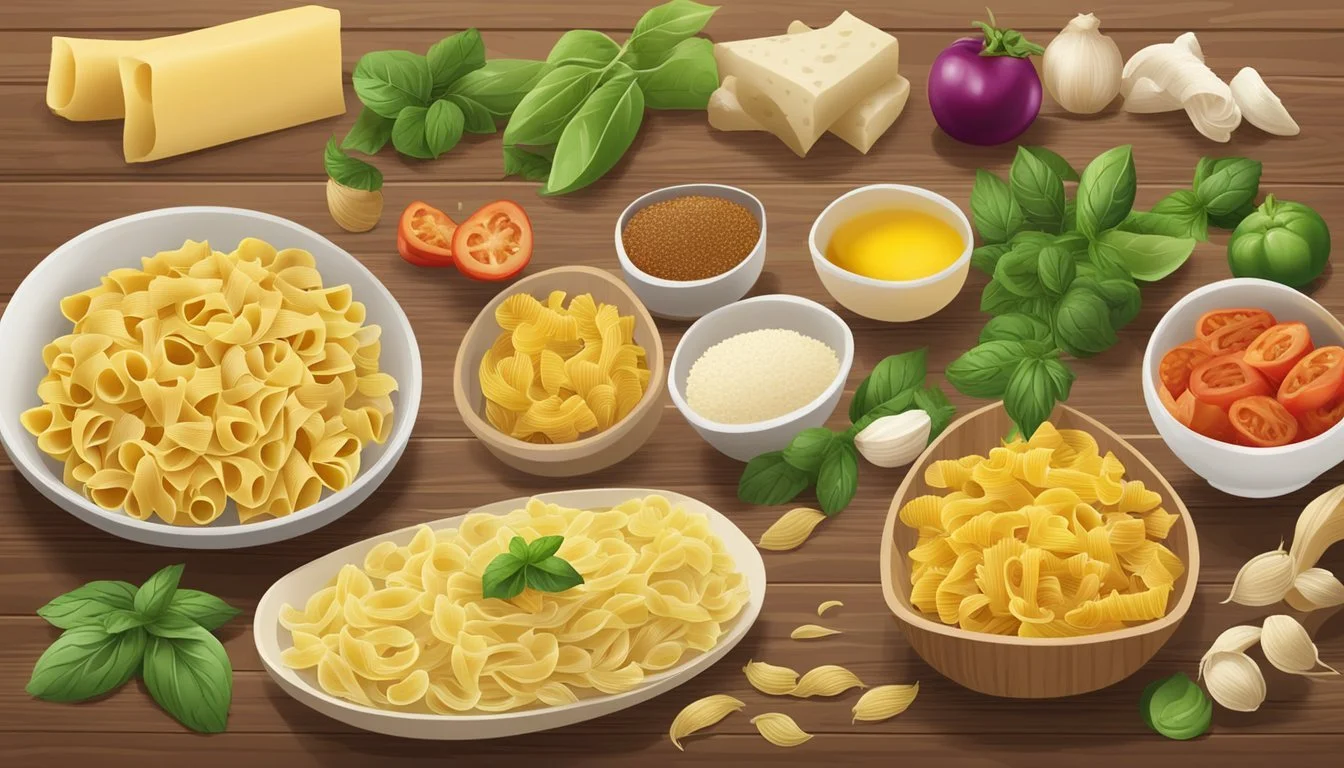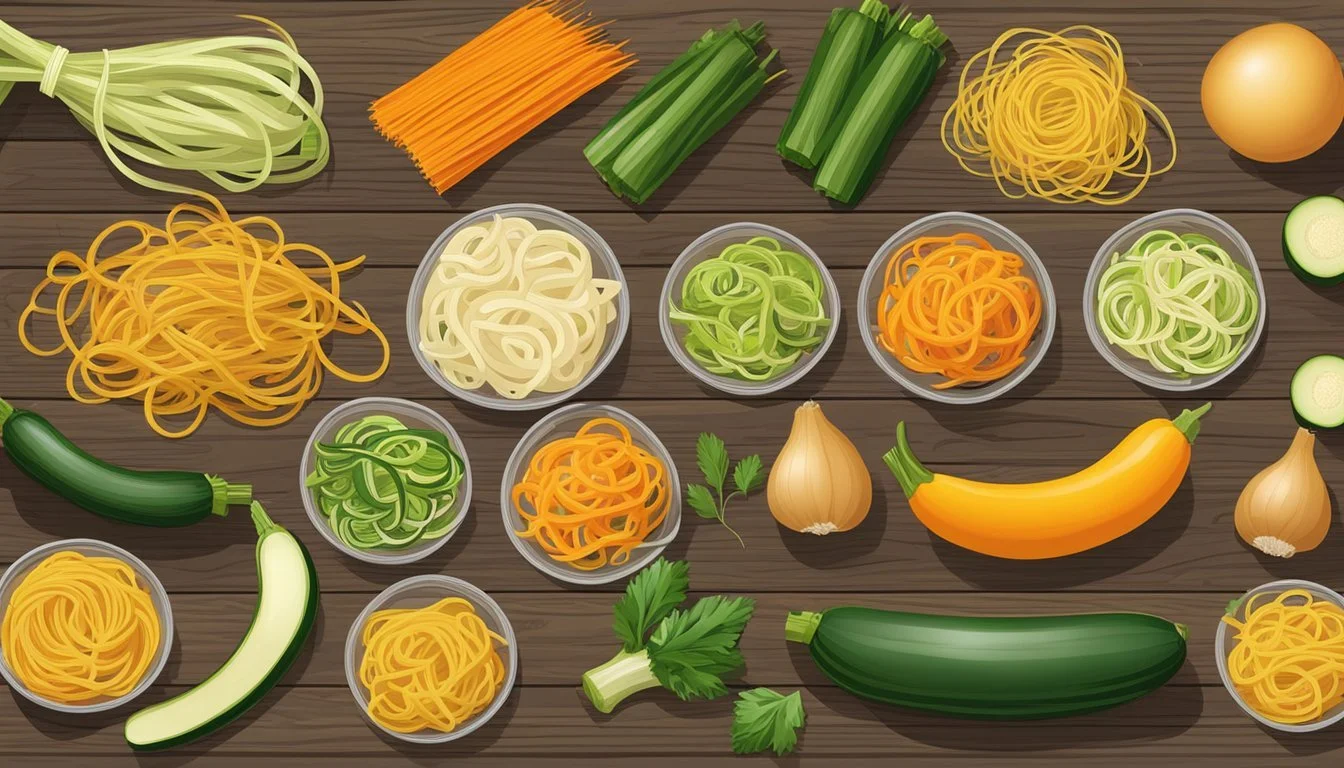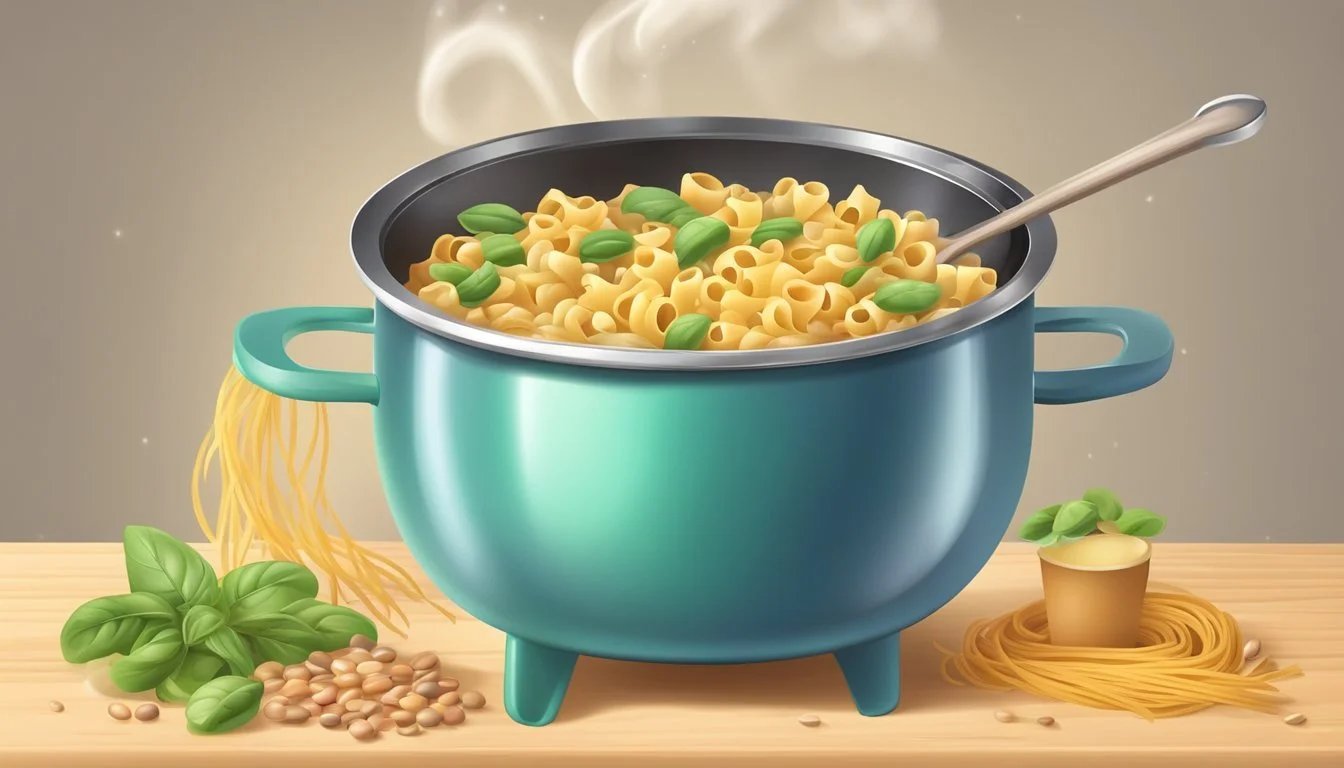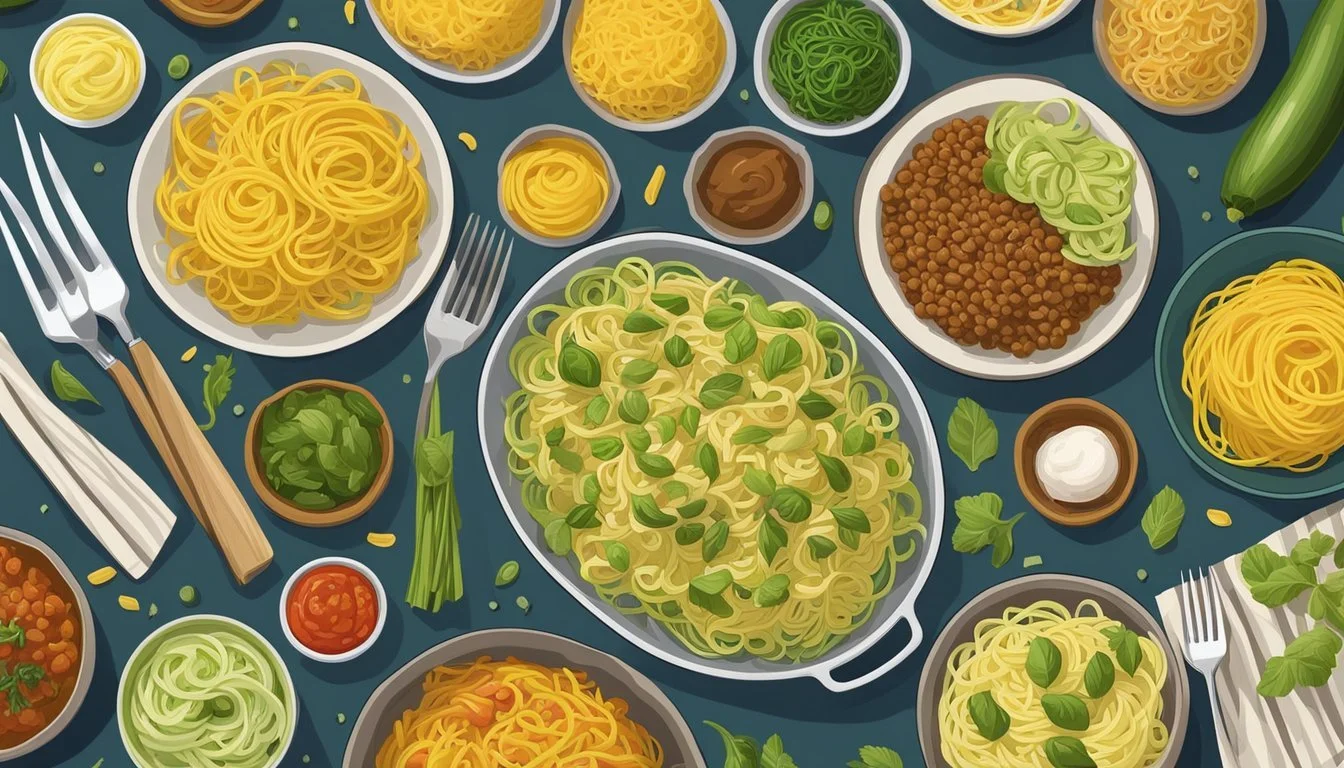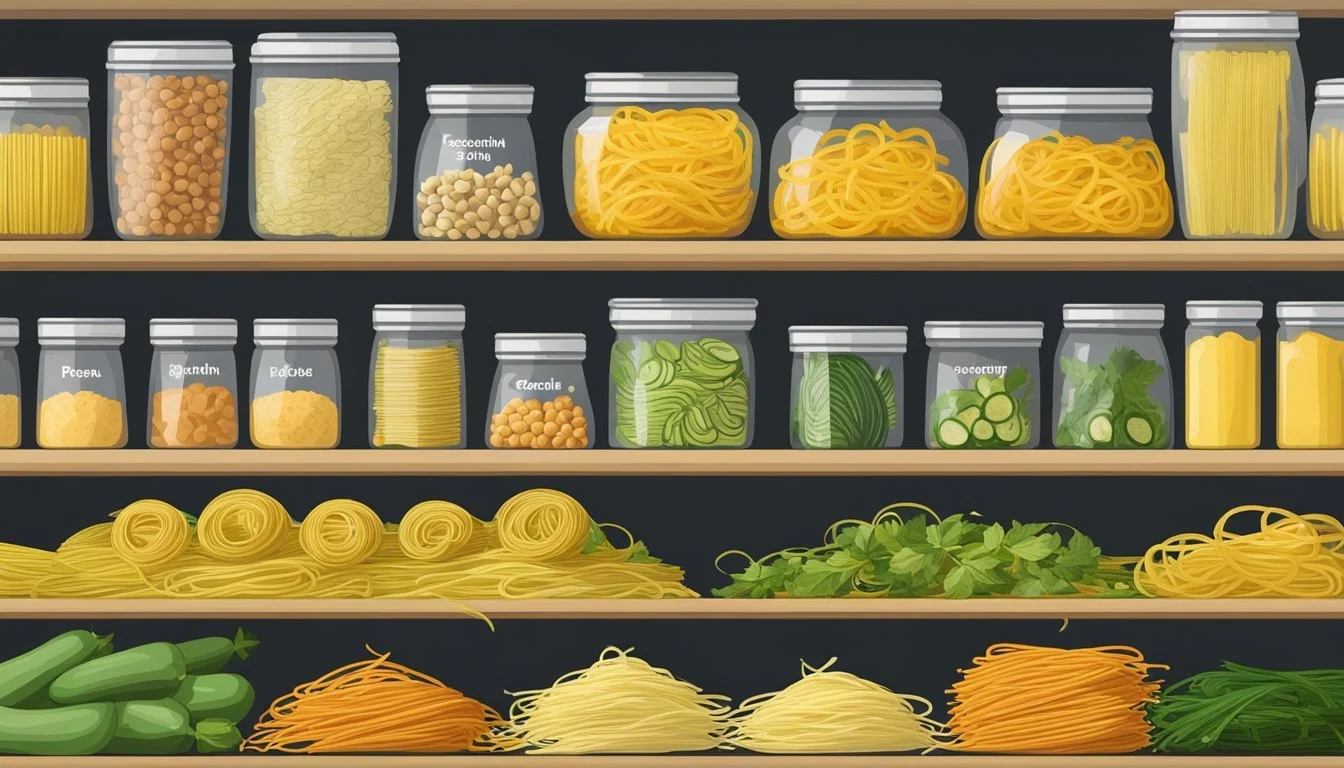Spaghetti Pasta Substitutes
Top Alternatives for Traditional Noodles
Spaghetti, a staple of traditional Italian cuisine, has long been a favorite comfort food around the world. The classic dish is traditionally made from durum wheat semolina, which is rich in carbohydrates and often, though not always, low in fiber and other nutrients. This has led to an increasing demand for healthier alternatives that cater to various dietary requirements, such as gluten intolerance and low-carb diets.
The plethora of spaghetti substitutes now available in the market offers a way to enjoy a similar experience without compromising dietary needs or preferences. These substitutes range from those made with other grains like rice or quinoa to vegetable-based options like spiralized zucchini or other squash, which are lower in calories and carbohydrates while also providing additional nutrients. They are designed to mimic the texture and flavor of traditional pasta (What wine goes well with pasta?) while contributing their own unique taste profiles.
Alongside the nutritional benefits, the alternatives to traditional pasta also vary in preparation and cooking time. Some may require shorter cooking times, while others might need different methods of preparation to ensure they don't lose their texture or flavor. Substitutes like soba noodles bring a hearty, nutty flavor to dishes and are rich in fiber and protein. On the other hand, rice noodles offer a gluten-free option and have a slightly gelatinous texture which works well in a variety of recipes. Each substitute provides its own distinct health benefits and culinary possibilities, making the enjoyment of a classic spaghetti dish accessible to a broader audience with varying dietary needs.
Understanding Pasta Substitutes
When exploring pasta substitutes, one will find options that offer a range of health benefits and can cater to various dietary needs, from gluten-free to low-carb diets.
Health Benefits
Pasta substitutes often provide enhanced nutritional value compared to traditional wheat pasta. They can be higher in protein and fiber while also containing fewer calories and carbohydrates. For instance, soba noodles are noted for their protein content. Similarly, spiralized vegetables like zucchini substitute traditional pasta, significantly reducing calorie intake and increasing your meal's vitamin and mineral content.
Dietary Considerations
Individuals with gluten sensitivities or celiac disease may opt for gluten-free alternatives such as rice noodles or quinoa spaghetti. These substitutes provide similar textures and flavors without the gluten found in traditional pasta. For those aiming for a low-carb diet, substitutes like cabbage or spaghetti squash are excellent choices as they have a lower carbohydrate count while also providing necessary nutrients. Here's a quick breakdown of some popular substitutes and their dietary highlights:
Substitute Gluten-Free Low-Carb Fiber Protein Spiralized Vegetables Yes Yes High Low Rice Noodles Yes No Low Low Quinoa Spaghetti Yes No Medium High Soba Noodles No No High High Cabbage Yes Yes Low Low
Choosing the appropriate pasta substitute can significantly influence the meal's macronutrient composition, particularly in terms of fat, protein, and fiber, aligning with personal nutritional goals and dietary restrictions.
Vegetable-Based Alternatives
When searching for spaghetti pasta substitutes, vegetables offer a diverse range of options. They are nutritionally dense, generally lower in carbs than traditional pasta, and can provide different textures and flavors to enhance a meal.
Zucchini Noodles
Zucchini noodles, or zoodles, have gained popularity for their pasta-like consistency and ease of preparation. They are made using a spiralizer which turns the vegetable into long, curly strands. Zoodles can be cooked quickly, requiring just 1 to 2 minutes, ensuring they maintain a slight bite reminiscent of al dente spaghetti.
Carbs: Significantly lower than regular pasta.
Preparation: Spiralize and cook until barely tender.
Flavor Pairing: Works well with both light and robust sauces.
Spaghetti Squash
Another favorite among pasta substitutes is spaghetti squash. This vegetable, when cooked, naturally separates into long, spaghetti-like strands with a fork. It is not only lower in carbs but also provides an additional nutritional punch.
Carbs: Moderate, yet less than traditional pasta.
Preparation: Roast and then fluff into strands.
Flavor Pairing: Versatile, pairs well with tomato-based and creamy sauces.
Shirataki Noodles
Shirataki noodles are made from the konjac plant and have a translucent appearance. These noodles are unique for being almost entirely carb-free and very low in calories.
Carbs: Minimal to none.
Preparation: Rinse well and then heat to remove excess water.
Flavor Pairing: Adaptable to bold flavors like garlic, soy, or peanut sauces.
Cauliflower
Cauliflower can be transformed into a variety of pasta substitutes, such as cauliflower 'rice' or mashed cauliflower for a creamy, comforting base.
Carbs: Lower in carbs and loaded with vitamins.
Preparation: Steam and pulse in a food processor.
Flavor Pairing: Complements cheese sauces and can substitute for heavier, creamy pasta dishes.
Other Vegetable Noodles
Vegetable noodles can also be created from a variety of other vegetables, such as beets, carrots, and butternut squash. Each vegetable brings its own flavor profile and nutritional benefits.
Carbs: Generally lower in carbs, varies with each vegetable.
Preparation: Spiralize or shave into thin strips.
Flavor Pairing: Earthy vegetables like beets pair well with tangy goat cheese, while sweeter squashes complement spices and herbs.
Legume and Bean-Based Pastas
Legume and bean-based pastas have emerged as nutritious alternatives to traditional wheat pasta, offering higher protein content, an increase in fiber, and a lower carbohydrate option for those seeking healthier meal choices. They typically contain essential nutrients like magnesium and can cater to various dietary needs.
Lentil Noodles
Lentil noodles offer a gluten-free pasta option that is rich in protein and fiber. One serving of lentil pasta can contain about 11 to 15 grams of protein, making it a substantial part of a meat-free meal. These noodles are made primarily from lentil flour and may come in various shapes and sizes, catering to a range of pasta dishes.
Nutritional benefits often include:
High protein content
Increased fiber
Essential micronutrients like magnesium
Chickpea Pasta
Chickpea pasta stands out as another nutritious choice, providing a good source of protein and fiber. Chickpea pasta can fit into many dietary regimens with its versatility. Each serving typically contains approximately 7 to 10 grams of protein. Chickpea pasta's robust flavor profile allows it to pair well with a variety of sauces.
Key points about chickpea pasta:
Protein-rich: supports muscle growth and repair
Adds a fiber boost: aids in digestion
Black Bean Spaghetti
Black Bean Spaghetti presents a unique and visually striking alternative with its dark color and high nutrient density. It's known for its high protein content, which can surpass 20 grams per serving. Besides being an excellent source of protein and fiber, black bean spaghetti is also lower in carbohydrates, making it an ideal option for a low-carb diet.
Nutrient profile highlights include:
Over 20 grams of protein per serving
A source of essential minerals like calcium and iron
Grain-Based Alternatives
For those seeking a healthier alternative to traditional spaghetti pasta, grain-based options provide both variety and nutrition. They offer an array of flavors and textures, while often catering to dietary requirements such as gluten-free.
Brown Rice Pasta
Brown rice pasta is an excellent substitute that retains a firm texture similar to traditional wheat pasta. It's made from whole grain brown rice, which is rich in fiber and essential nutrients. Brown rice pasta is especially suitable for those who are gluten intolerant, as it is naturally gluten-free.
Cooking Time: Follow package instructions, typically al dente in 7-10 minutes.
Nutritional Profile:
Calories: Comparable to regular pasta
Fiber: Higher due to whole grain content
Quinoa Noodles
Quinoa noodles are crafted from quinoa flour and are another nutritious gluten-free alternative to spaghetti pasta. Quinoa, a protein-packed grain, includes all nine essential amino acids. These noodles offer a slightly nutty flavor and a delicate texture that can complement a variety of sauces.
Cooking Time: Usually cooks in 6-9 minutes.
Advantages:
High in protein
Gluten-free for those with sensitivities
Soba Noodles
Soba noodles, originating from Japan, are made predominantly from buckwheat flour and sometimes a combination of wheat and buckwheat. While not all soba noodles are gluten-free, they can be if made entirely of buckwheat. They stand out with their earthy flavor and are typically served cold or in hot broths.
Key Attributes:
Can be gluten-free if made with 100% buckwheat
Distinctive nutty flavor
Cooking Tips:
Cook briefly to avoid over-softening, typically around 4-5 minutes.
Other Alternative Types
When considering alternative types of spaghetti pasta, health-conscious consumers often look for options that are low in carbohydrates and calories but high in essential nutrients. Among these alternatives, kelp and seaweed noodles, soy and tofu noodles, and konjac and shirataki noodles are popular choices for their unique nutritional profiles and culinary versatility.
Kelp and Seaweed Noodles
Kelp noodles are made from the brown seaweed known as kelp, which is a rich source of iodine—a vital nutrient for thyroid health. They are transparent, nearly calorie-free, and can absorb the flavors of the dishes to which they are added. Seaweed noodles, on the other hand, can include a variety of seaweeds and hold a slightly different nutritional value with similar benefits. They both offer the taste of the sea and can be a perfect addition to Asian-inspired dishes.
Soy and Tofu Noodles
Derived from soybeans, tofu noodles are a protein-packed alternative that can help maintain muscle mass and support a healthy diet, particularly for vegans and vegetarians. Containing soy protein, tofu noodles are a substantial option with a chewy texture. They are also suitable for individuals managing diabetes due to their potential to help stabilize blood sugar levels.
Konjac and Shirataki Noodles
Konjac noodles, also known as shirataki noodles, are made from glucomannan—a water-soluble dietary fiber obtained from the root of the konjac plant. These noodles are incredibly low in calories and carbs and have a gelatinous texture. They are often marketed as a weight-loss-friendly food and are beneficial for those with diabetes as they may help in controlling blood sugar spikes after meals.
Preparing and Cooking Pasta Substitutes
When crafting a dish with pasta substitutes, one must apply specific cooking techniques, appropriate seasonings and sauces, and innovative alternative dish ideas to best mimic or improve upon the traditional pasta experience.
Cooking Techniques
To achieve the perfect texture akin to pasta's al dente quality, one should apply the correct cooking method for the substitute in question. Spiralized vegetables like zucchini noodles, often referred to as "zoodles," should be cooked for just 1 to 2 minutes in boiling water to become barely tender. When using grain-based alternatives like brown rice pasta, one must follow the package instructions, but typically the pasta is boiled in salted water for a slightly longer time than traditional pasta. For substitutes that are more delicate like shirataki noodles, a quick rinse and brief heating are sufficient since they are already cooked.
Boiling: Submerge the pasta alternative in salted boiling water.
Rinsing: For noodles like shirataki, rinse well under cold running water.
Heating: Some substitutes, especially pre-cooked ones, need only be heated through.
Seasoning and Sauces
The success of pasta substitutes also highly depends on the accompanying sauces and seasonings. One should aim to balance flavors to complement the substitute's unique texture and taste. Traditional sauces like marinara and pesto can be used readily. For a richer flavor, sautéing with butter and a squeeze of lemon can elevate the dish. When seasoning, take care to add salt sparingly, especially if the substitute has been boiled in salted water.
Sauce pairing ideas:
Marinara: A classic choice for a tomato-based, herby experience.
Pesto: Basil and pine nuts provide a nutty and fresh profile.
Butter sauce: Simple yet rich, often heightened with herbs or lemon.
Alternative Dish Ideas
Using pasta alternatives opens a realm of creative dish options. One might toss spiralized vegetable noodles in a light pesto sauce or combine brown rice pasta with hearty vegetables and marinara for a filling meal. It's one's opportunity to experiment and find what complements the substitute's characteristics. Imagine a cabbage noodle dish, lightly sautéed, and served with a tangy Asian-inspired sauce or a quinoa pasta salad enriched with vibrant, fresh produce.
Salad-style: Mix cold pasta substitutes like spiralized veggies with vinaigrette and vegetables.
Asian twist: Sauté any noodle substitute with soy sauce, and add ginger and garlic.
Incorporating these various cooking techniques, seasonings, and dish ideas will ensure that pasta substitutes hold their own in any culinary repertoire, offering a delightful alternative to the beloved spaghetti.
Integrating Pasta Substitutes Into Meals
When incorporating pasta substitutes into meals, the chef focuses on texture compatibility and flavor pairing to enhance the dining experience.
Creative Salad Incorporations
In pasta salad preparations, chefs often opt for zucchini noodles due to their ability to absorb dressings while maintaining a satisfying crunch. Vegetables like spiraled carrot or cucumber are also popular for their crisp texture and color. To assemble a pasta salad with these substitutes:
Spiralize the vegetables.
Toss with your favorite dressing and herbs.
Chill before serving to allow flavors to meld.
These substitutes provide a gluten-free option to traditional macaroni or wheat pasta, making the dish accessible to diners with dietary restrictions.
Hearty Soups and Stews
Substitutes like rice noodles or brown rice pasta can be used effectively in soups and stews. They absorb flavors well and contribute to a hearty texture.
Pre-cook pasta substitutes to avoid over-swelling in the soup.
Add them during the last few minutes of simmering.
Brown rice pasta, in particular, offers a robust texture similar to that of traditional egg noodles, making it a favored choice for chicken noodle soups or Italian wedding soup.
Casserole and Bake Dishes
Replacing pasta in dishes like lasagna or baked ziti, chefs often turn to thinly sliced eggplant or butternut squash. They layer these vegetables as one would with lasagna sheets, resulting in a nutrient-rich, lower-carb option.
Roast vegetable slices before layering to release moisture and concentrate flavors.
Gluten-free options include lentil or chickpea pasta, which hold up well in the baking process and add a protein boost.
For a ravioli alternative, chefs may stuff blanched cabbage leaves or thinly sliced and softened root vegetables with a traditional cheese or meat filling before baking.
Nutrition and Weight Management
When considering spaghetti pasta substitutes, one should examine their influence on weight management and how their nutritional profile compares. Substitutes often offer a reduction in calories and carbohydrates which can be beneficial for those on a low-carb diet.
Caloric Impact
Substitutes for traditional pasta vary widely in caloric content, which directly affects weight management. For instance, pasta made from quinoa contains protein and fiber, potentially offering a lower calorie count compared to traditional wheat pasta. Vegetables such as zucchini, when spiralized into noodles (also known as zoodles), provide a significantly lower caloric option, making them ideal for weight loss.
Quinoa Pasta: Approximately 200-220 calories per serving
Zucchini Noodles: Approximately 20 calories per serving
Macronutrient Profiles
The macronutrient balance of pasta substitutes can support a low-carb diet and may contribute essential nutrients. Different substitutes offer varied profiles:
Squash Varieties: Butternut squash, for example, is high in vitamins A, C, and E while having about 12 grams of carbs per cup.
Vegetable Options: Cabbage and zucchini are low in carbs and calories, providing an alternative that's rich in nutrients such as vitamin C and potassium without the high starch content of regular pasta.
Substitute Carbs Protein Fat Calories Quinoa Spaghetti Medium High Low Medium Cabbage Low Low Low Very Low Zucchini Noodles Very Low Low Low Very Low Butternut Squash Low Low Low Low
In summary, spaghetti pasta substitutes may offer a lower-carb, lower-calorie alternative rich in essential nutrients, aligning with a low-carb diet and facilitating better weight management.
Selective Shopping for Pasta Substitutes
When seeking pasta substitutes, shoppers should focus on the quality of products, understand labels and nutritional information, and consider benefits of both produce and packaged alternatives.
Identifying Quality Products
Consumers should look for pasta substitutes that offer a texture similar to traditional pasta. Quality products often boast a firmness that can hold up against sauces and dressings. Specific to pasta alternatives like quinoa spaghetti, the texture should not be too mushy or overly firm. An ideal substitute will cook to an al dente texture, emulating the bite of wheat-based pasta.
Labels and Nutritional Information
Knowing how to read labels is essential when picking pasta alternatives. A quality substitute provides comprehensive nutritional information. Shoppers should check for:
Net Carbohydrates: Important for those on low-carb diets.
Protein Content: To ensure the substitute can be a part of a balanced meal.
Fiber: For digestive health benefits.
Presence of Nutrients: Such as antioxidants and vitamins, including Vitamin C.
An example label might list ingredients like organic rice, quinoa, and amaranth, which indicates a pasta alternative rich in nutrients.
Produce Section versus Packaged Foods
Pasta substitutes come in both fresh and packaged forms. Fresh alternatives often lie in the produce section and include vegetables such as zucchini or butternut squash, which can be spiralized for a nutrient-dense pasta-like noodle. These provide high levels of antioxidants and beneficial nutrients like Vitamin C. Packaged foods may offer convenience and a longer shelf life, with alternatives such as brown rice pasta or kelp noodles. These options can be just as nutritious as their fresh counterparts, and they often come in familiar pasta shapes, offering a similar culinary experience to traditional spaghetti.
Conclusion
Individuals looking for pasta alternatives have numerous choices at their disposal, each providing a unique nutritional profile and culinary experience. They may choose from a wide array of types and shapes to suit their dietary needs and flavor preferences.
Types of Pasta Substitutes:
Rice Noodles: A gluten-free option with a delicate texture, suitable for stir-fries and soups.
Brown Rice Pasta: Offers a whole-grain alternative, bringing a nuttier flavor and firmer bite.
Kelp Noodles: These are virtually calorie-free and rich in minerals, ideal for those on a low-carb diet.
Shirataki Noodles: Composed primarily of glucomannan fiber, they are low in calories and carbohydrates.
Quinoa-Based Pasta: Incorporates a complete protein source, as well as a pleasing texture and taste.
Soba Noodles: Made from buckwheat, they are higher in fiber and protein than regular pasta.
Considerations for Pasta Shapes:
Spiralized Vegetables: Can mimic spaghetti and are quickly cooked.
Vermicelli: Thin strands that can be a fine replacement in both cold and hot dishes.
When selecting a pasta alternative, one should consider the dish's overall flavor and the sauce's consistency, as some substitutes may carry bolder flavors or varied textures than traditional pasta. The key to a successful substitution is matching the alternative's characteristics with the intended recipe. By doing so, one preserves the essence of the original dish while enjoying a potentially healthier version.


